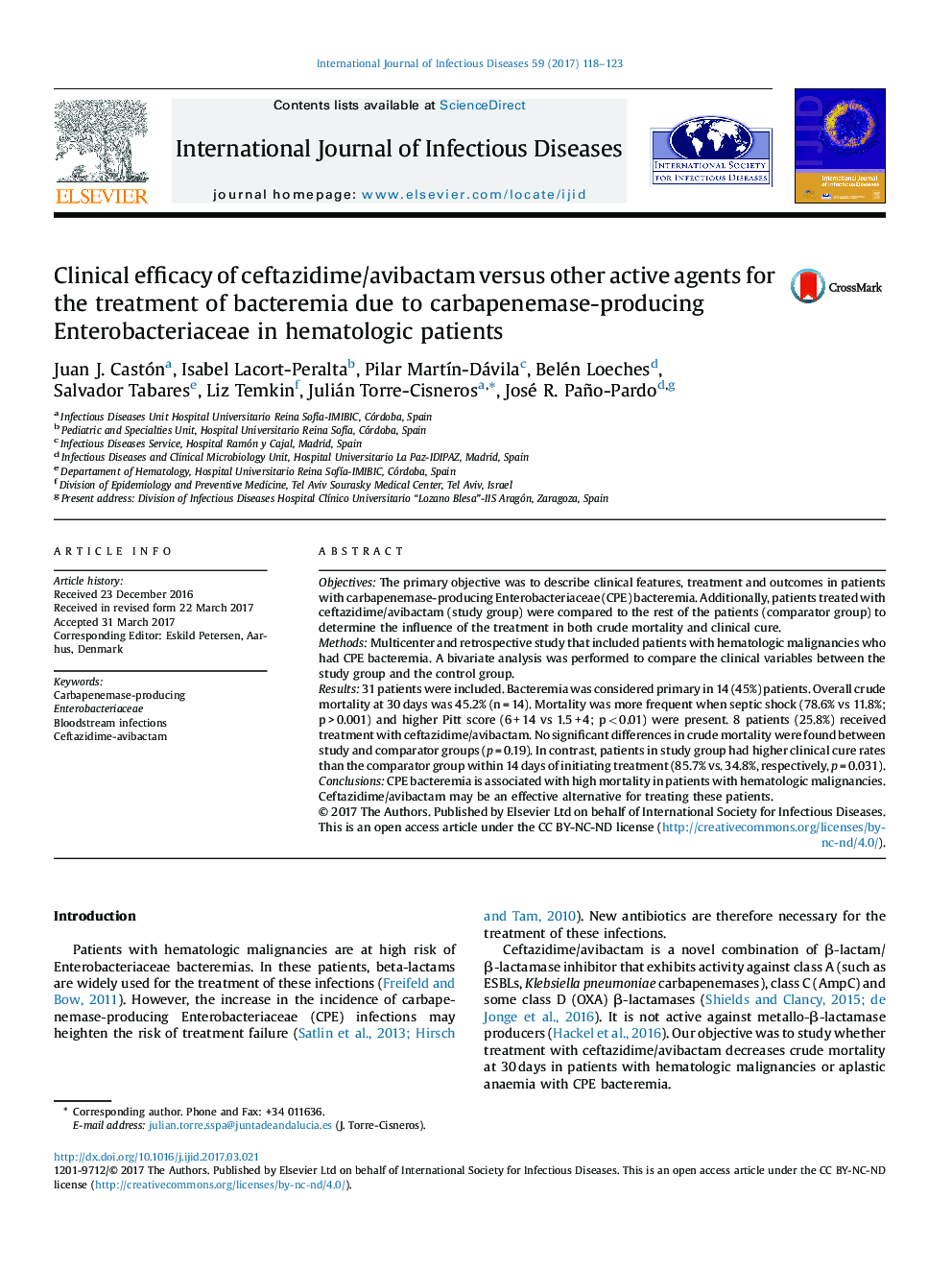| Article ID | Journal | Published Year | Pages | File Type |
|---|---|---|---|---|
| 5667217 | International Journal of Infectious Diseases | 2017 | 6 Pages |
â¢The majority of CPE corresponded to OXA-48 isolations.â¢CPE bacteremia is associated with high mortality in hematologic patients.â¢Mortality was associated with septic shock and higher Pitt score.â¢Therapy with ceftazidime/avibactam was not associated with increased survival.â¢Patients who received ceftazidime/avibactam had higher clinical cure rates.
ObjectivesThe primary objective was to describe clinical features, treatment and outcomes in patients with carbapenemase-producing Enterobacteriaceae (CPE) bacteremia. Additionally, patients treated with ceftazidime/avibactam (study group) were compared to the rest of the patients (comparator group) to determine the influence of the treatment in both crude mortality and clinical cure.MethodsMulticenter and retrospective study that included patients with hematologic malignancies who had CPE bacteremia. A bivariate analysis was performed to compare the clinical variables between the study group and the control group.Results31 patients were included. Bacteremia was considered primary in 14 (45%) patients. Overall crude mortality at 30 days was 45.2% (n = 14). Mortality was more frequent when septic shock (78.6% vs 11.8%; p > 0.001) and higher Pitt score (6 + 14 vs 1.5 + 4; p < 0.01) were present. 8 patients (25.8%) received treatment with ceftazidime/avibactam. No significant differences in crude mortality were found between study and comparator groups (p = 0.19). In contrast, patients in study group had higher clinical cure rates than the comparator group within 14 days of initiating treatment (85.7% vs. 34.8%, respectively, p = 0.031).ConclusionsCPE bacteremia is associated with high mortality in patients with hematologic malignancies. Ceftazidime/avibactam may be an effective alternative for treating these patients.
